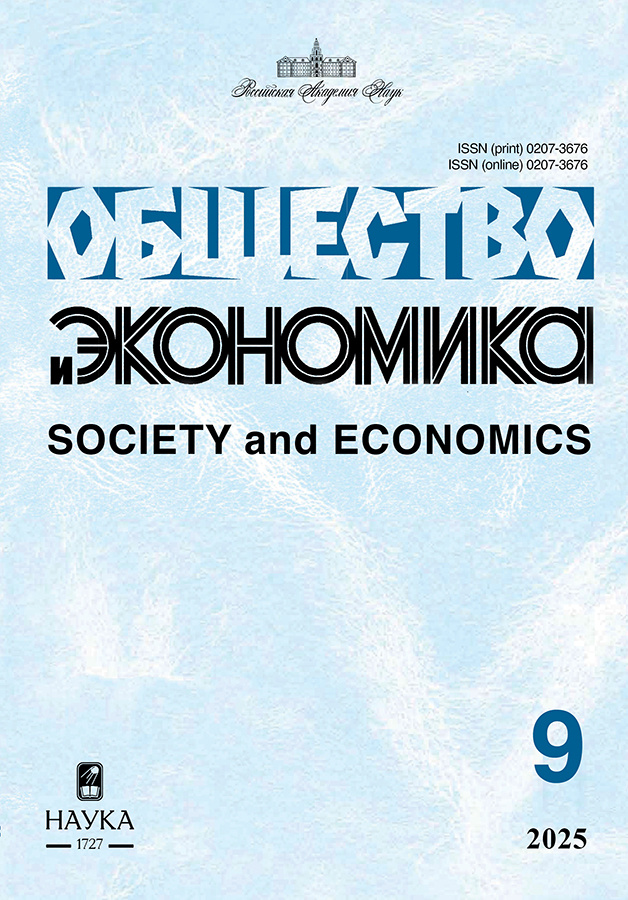Занятость в неблагоприятных условиях и социальное самочувствие работников
- Авторы: Соболева И.В.1
-
Учреждения:
- Институт экономики РАН
- Выпуск: № 10 (2023)
- Страницы: 41-54
- Раздел: Статьи
- URL: https://freezetech.ru/0207-3676/article/view/671377
- DOI: https://doi.org/10.31857/S020736760028112-2
- ID: 671377
Цитировать
Полный текст
Аннотация
В статье на основе данных Роструда и Комплексного наблюдения условий жизни населения Росстата прослежена динамика занятости в неблагоприятных условиях, выявлены категории работников, находящиеся под повышенным риском попадания в зону действия неблагоприятных производственных факторов, установлена взаимосвязь условий труда работников и аспектов их социального самочувствия, связанных с работой. Обоснованы проблемные зоны, требующие внимания государства: рост доли занятых на тяжелой работе, широкое распространение стрессовых ситуаций на рабочих местах и выпадение из статистического учета значительной части производственного травматизма. Установлено, что занятость в неблагоприятных условиях сопряжена с целым шлейфом негативных последствий для работников, а потому приводит к существенному ухудшению их социального самочувствия.
Список литературы
- Автономов В.C., Автономов Ю.В. Общая теория «споров о методах» в экономической науке // Общественные науки и современность. 2016. № 4. С. 5–20.
- Бакеев М.Б., Лола И.С. Использование опросов-самоотчетов в экономической науке: методологические барьеры и их преодоление // Вопросы экономики. 2023. № 9. С. 103–120.
- Елин А.М., Шумилин В.К. Оценка условий и безопасности труда на основе паспортов рабочих мест // Охрана и экономика труда. 2016. № 1(22). С. 4–17.
- Калашникова И.В., Медведева Г.Г., Сигитова М.А., Филиппова К.В. Ценности и предпочтения молодежи на российском рынке труда // Вестник Тихоокеанского государственного университета. 2022. №1 (64). С. 145–154.
- Козицкий С.С., Рейнерт Д. Будущие вызовы в мире труда и их влияние на охрану труда // Охрана и экономика труда. 2016. № 4 (25). С. 101–104.
- Корж В.А. Основные направления улучшения условий труда работников // Охрана и экономика труда. 2015. № 3(20). С. 4–7.
- Кубишин Е.С. Проблемы достоверности учета профессиональной заболеваемости в России и пути их решения // Социально-трудовые исследования. 2023. № 1 (50). С. 94–107. doi: 10.34022/2658-3712-2023-50-1-94-107.
- Результаты мониторинга условий и охраны труда в Российской Федерации в 2020 году. М., 2021. URL: https://vcot.info/uploads/researches_file/619cbdc415951343985474.pdf (дата обращения 10.08.2023).
- Решетников Е.Н. Тенденции в развитии охраны труда в Российской Федерации, с учетом мирового опыта // Безопасность и охрана труда. 2010. № 1. С. 78–80.
- Соболев Э.Н., Соболева И.В. Российская трудовая модель и политика занятости // Общество и экономика. 2022. № 3. С. 22–34.
- Соболева И.В. Профессионально-квалификационный дисбаланс как вызов экономической и социальной безопасности // Экономическая безопасность. 2022. Том 5. № 3. C. 989–1008.
- Соболева И.В. Вызовы социально-экономической безопасности в сфере труда и их особенности в современной России // Экономическая безопасность. 2023. Том 6. № 2.
- Тавокин Е.П. Российская молодёжь на рынке труда в оценках экспертов // Мониторинг общественного мнения: Экономические и социальные перемены. 2016. № 2. С. 175–184.
- Шкаратан О.И., Карачаровский В.В. Русская трудовая и управленческая культура // Мир России. 2002. № 1. С. 3–56.
- Ядов В.А. Отношение к труду, концептуальная модель и реальные тенденции // Социологические исследования. 1983. №3. С. 55–61.
- Barazzetta M. The asymmetric effect of expectations on subjective well-being. Working Paper 374. ECINEQ, Society for the Study of Economic Inequality. 2015.
- Economic Security for a Better World. Geneva: ILO. 2004.
- Kaiser C., Oswald A. J. The scientific value of numerical measures of human feelings. Proceedings of the National Academy of Sciences. 2022. Vol. 119. No. 42. URL: https://doi.org/10.1073/pnas.2210412119 (дата обращения 10.08.2023).
- OECD (2013), OECD Guidelines on Measuring Subjective Well-being, OECD Publishing, Paris. URL: https://doi.org/10.1787/9789264191655-en (дата обращения 10.08.2023); Oparina E., Srisuma S. Analyzing Subjective Well-Being Data with Misclassification // Journal of Business & Economic Statistics. 2022. Vol. 40. No. 2. P. 730–743. URL: https://doi.org/10.1080/07350015.2020.1865169 (дата обращения 10.08.2023).
- Saari L.M., Judge, T.A. Employee attitudes and job satisfaction // Human Resource Management: Published in Cooperation with the School of Business Administration, The University of Michigan and in alliance with the Society of Human Resources Management. 2004. № 43(4). Р. 395–407.
Дополнительные файлы











